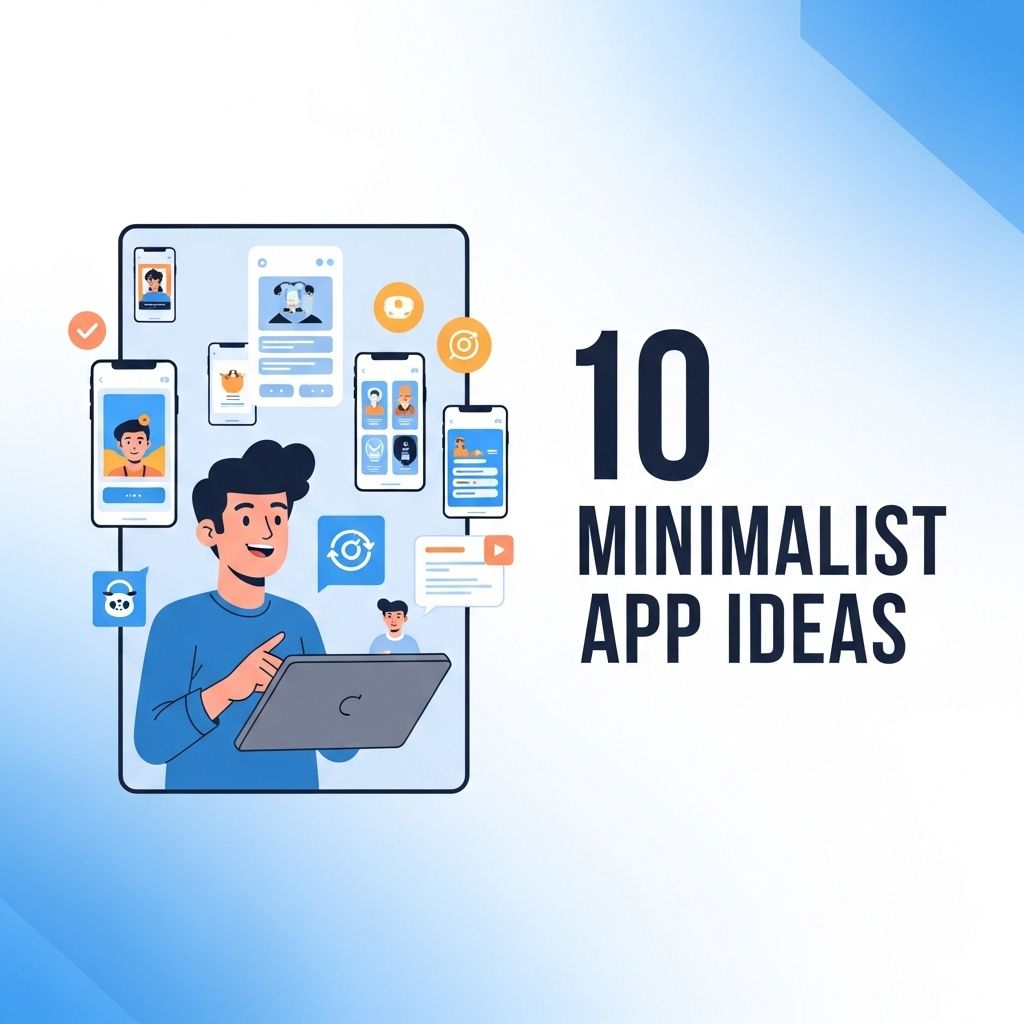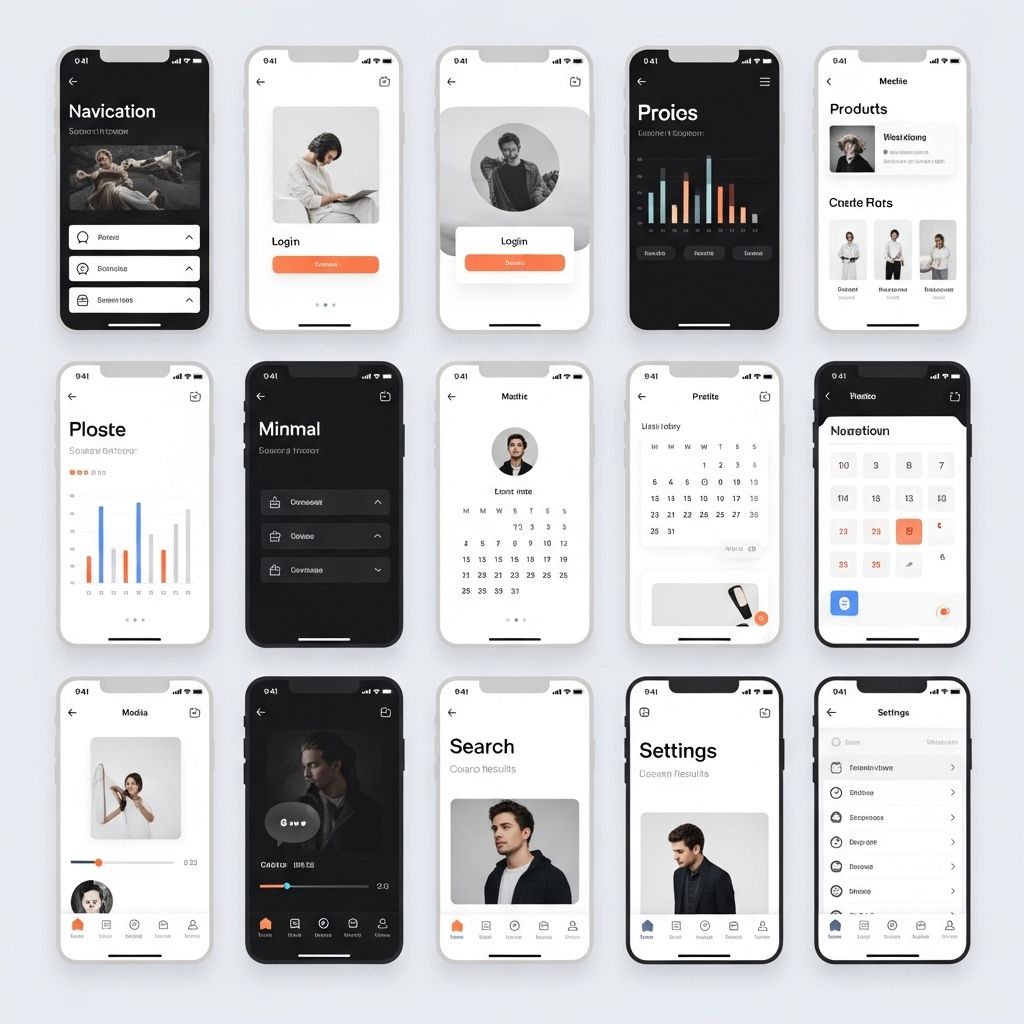In a world filled with distractions, minimalist app design has emerged as a breath of fresh air. By stripping away unnecessary elements and focusing on functionality, minimalist designs create a user-friendly experience that fosters engagement and clarity. This article will explore ten inspiring ideas for minimalist app design, showcasing how simplicity can lead to impactful user experiences.
1. Embrace White Space
White space, or negative space, is crucial in minimalist design. It helps to reduce cognitive load and allows users to focus on important content. Here’s how to effectively use white space:
- Use margins and padding generously to separate sections.
- Avoid clutter by limiting the number of elements on each screen.
- Employ a grid system to maintain balance and alignment.
Example
Consider a note-taking app that uses ample white space to separate different notes, making it easy to navigate and find specific information.
2. Limit Color Palette
Using a limited color palette can create a cohesive and sophisticated look. Here are some tips for choosing your palette:
- Pick 2-3 primary colors to represent your brand.
- Incorporate shades and tints of these colors for variety.
- Utilize neutral colors like white, gray, or black to balance bold colors.
Color Inspiration Table
| Primary Color | Shade | Usage |
|---|---|---|
| #FF5733 | #FF6F61 | Buttons |
| #2E86C1 | #5DADE2 | Links and Icons |
| #1F618D | #AAB7B8 | Background and Text |
3. Typography Matters
Typography plays a crucial role in minimalist design. A clean font enhances readability and sets the tone of the app. Consider the following:
- Choose sans-serif fonts for a modern look.
- Limit the number of font styles used in the app.
- Utilize hierarchy with size and weight to guide the user.
Recommended Fonts
Here are some popular typefaces that work well in minimalist design:
- Roboto
- Montserrat
- Open Sans
- Lato
4. Simplified Navigation
Minimalist apps often utilize streamlined navigation to enhance user experience. Here are key principles:
- Utilize bottom navigation bars for easy access.
- Incorporate gestures for seamless interaction.
- Use clear and concise labels for navigational elements.
Navigation Example
Imagine a fitness app that allows users to swipe between different workout categories, utilizing a bottom navigation bar to switch between sections like Home, Workouts, and Profile.
5. Focused Functionality
Each feature of a minimalist app should serve a specific purpose. To achieve this:
- Conduct user research to identify essential features.
- Eliminate redundancies and combine similar functionalities.
- Regularly update the app based on user feedback.
Feature Prioritization
Using a method such as the MoSCoW analysis can help prioritize features:
| Feature | Must have | Should have | Could have |
|---|---|---|---|
| Workout Logging | ✔️ | ||
| Progress Tracking | ✔️ | ✔️ | |
| Social Sharing | ✔️ | ✔️ |
6. Gesture-Based Interactions
To enhance usability, consider implementing gesture-based controls. This adds a layer of fun and intuitiveness. Ideas include:
- Swipe left or right to navigate between screens.
- Pinch to zoom in or out on images or graphs.
- Long press to reveal additional options or features.
Implementation Example
A photography app that allows users to swipe to view their gallery while using a pinch gesture to zoom in on photos is a great example of effective gesture use.
7. Visual Hierarchy
Effective visual hierarchy guides users through your app. To create a strong hierarchy:
- Utilize size and color contrast to distinguish elements.
- Organize information logically, from most to least important.
- Incorporate images or icons to complement text.
Design Approach
A task management app may display high-priority tasks in larger, bolder fonts while using smaller text for less significant tasks, thus guiding user focus.
8. Consistent Iconography
Using a uniform style for icons enhances the minimalist aesthetic. Consider the following:
- Stick to a single style (flat, outline, filled) across all icons.
- Ensure icons are easily recognizable and intuitive.
- Limit the number of icons on each screen to prevent clutter.
Icon Resources
Explore resources where you can find minimalist icons:
9. Feedback and Response
Providing user feedback is essential in maintaining engagement. Use the following strategies:
- Implement subtle animations to indicate that an action has occurred.
- Utilize auditory cues for important notifications or alerts.
- Display loading indicators during processing times.
Feedback Mechanism
A messaging app that shows a subtle animation when a message is sent can reassure users that their action has been completed.
10. Test and Iterate
Finally, always be ready to test and iterate on your designs. Conduct user testing to gather feedback on:
- Usability and ease of navigation.
- Visual appeal and emotional response.
- Functional performance of the app.
Iteration Process
Use tools like A/B testing to compare different design versions and determine which is more effective. This data-driven approach will help you continually refine your app.
In conclusion, minimalist app design is not just a trend; it’s a philosophy that emphasizes clarity, functionality, and user engagement. By implementing these ten ideas, you can create apps that are not only aesthetically pleasing but also highly effective in meeting user needs. Remember, the goal of minimalist design is to reduce distractions and enhance the user experience, which ultimately leads to a more successful app.
FAQ
What is minimalist app design?
Minimalist app design focuses on simplicity and functionality, removing unnecessary elements to create a clean and intuitive user experience.
How can I achieve a minimalist design in my app?
To achieve a minimalist design, prioritize essential features, use a limited color palette, and incorporate ample white space to enhance readability and usability.
What are the benefits of minimalist app design?
Benefits of minimalist app design include improved user experience, faster loading times, and easier navigation, leading to higher user satisfaction and engagement.
Can minimalist design be applied to all types of apps?
Yes, minimalist design can be applied to various types of apps, including productivity, lifestyle, and e-commerce, as it emphasizes clarity and ease of use.
What are some examples of successful minimalist app designs?
Successful minimalist app designs include popular apps like Google Keep, Evernote, and Calm, which use simple layouts and clear functionalities to enhance user experience.
How does minimalist design impact user retention?
Minimalist design can positively impact user retention by reducing cognitive load, creating a more enjoyable experience, and encouraging repeated use of the app.




